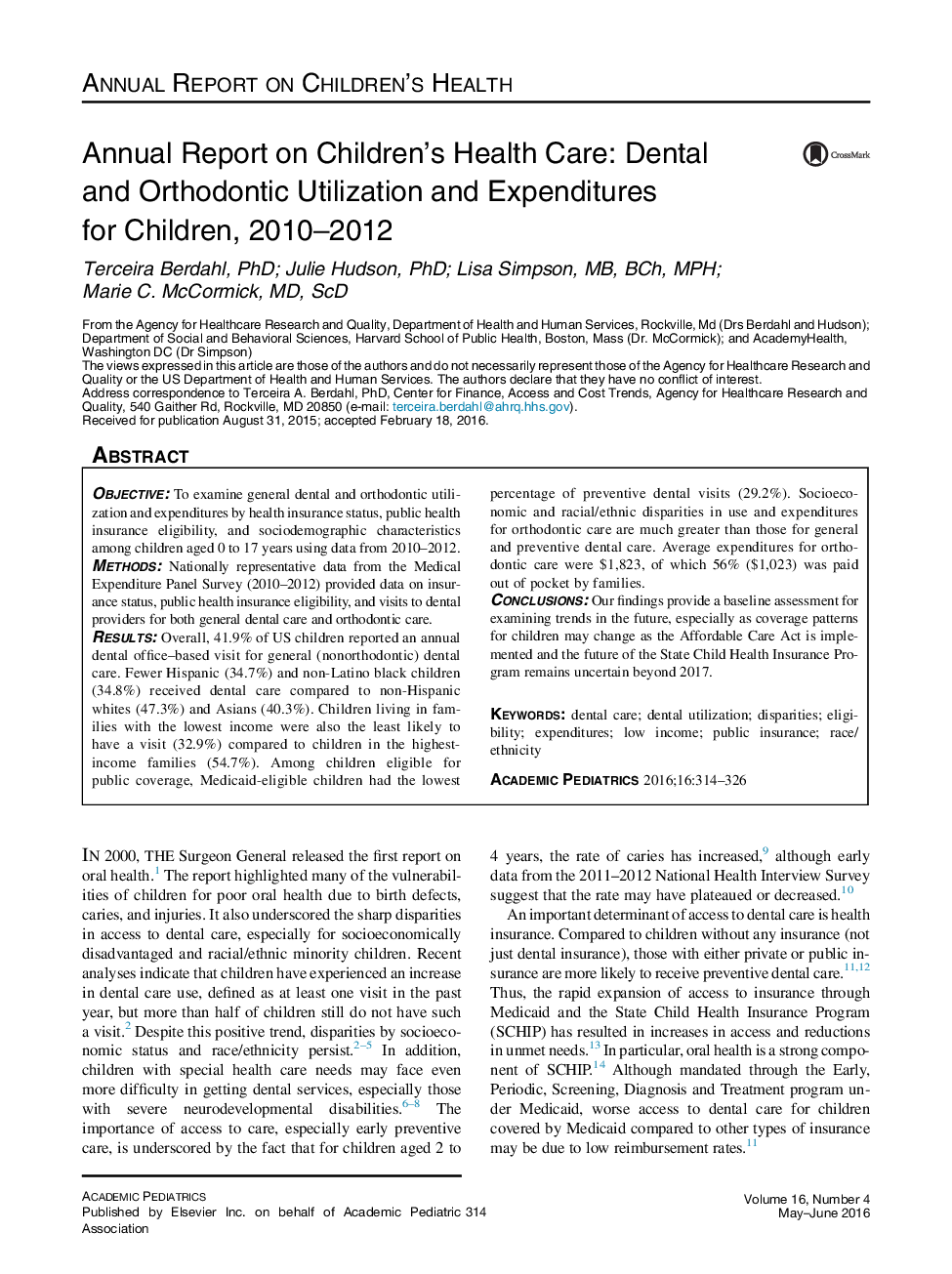| Article ID | Journal | Published Year | Pages | File Type |
|---|---|---|---|---|
| 4139173 | Academic Pediatrics | 2016 | 13 Pages |
ObjectiveTo examine general dental and orthodontic utilization and expenditures by health insurance status, public health insurance eligibility, and sociodemographic characteristics among children aged 0 to 17 years using data from 2010–2012.MethodsNationally representative data from the Medical Expenditure Panel Survey (2010–2012) provided data on insurance status, public health insurance eligibility, and visits to dental providers for both general dental care and orthodontic care.ResultsOverall, 41.9% of US children reported an annual dental office–based visit for general (nonorthodontic) dental care. Fewer Hispanic (34.7%) and non-Latino black children (34.8%) received dental care compared to non-Hispanic whites (47.3%) and Asians (40.3%). Children living in families with the lowest income were also the least likely to have a visit (32.9%) compared to children in the highest-income families (54.7%). Among children eligible for public coverage, Medicaid-eligible children had the lowest percentage of preventive dental visits (29.2%). Socioeconomic and racial/ethnic disparities in use and expenditures for orthodontic care are much greater than those for general and preventive dental care. Average expenditures for orthodontic care were $1,823, of which 56% ($1,023) was paid out of pocket by families.ConclusionsOur findings provide a baseline assessment for examining trends in the future, especially as coverage patterns for children may change as the Affordable Care Act is implemented and the future of the State Child Health Insurance Program remains uncertain beyond 2017.
